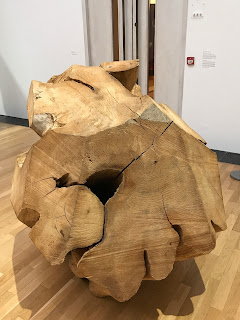-->
If you’re lucky, you might spot
signs of Harry and Meghan’s wedding, some windblown confetti stuck to a
lamppost, or even a feather from one of those ridiculous hats. My wife and her
friend spotted some Morris Dancers, for whom I retain a soft spot, having once
fiddled for a Welsh-dancing troupe, but I was treated to a tour of
the Windsor and Eton brewery, a far more attractive proposition. Their mission
statement is to ‘make Windsor more famous for its beers than any other
attraction.’ Well, good luck with that, though if this blog post helps, you
know where to send a crate of your finest.
We walked up to a fairly
nondescript building in a nondescript street of terraced housing, through a
plate glass door, and into a small and bland looking drinking area full of
serious men (and women, though they were fewer on the ground) The smell was
something else and my nose and throat quivered.
The guy who showed us around was
made for the job, beard, jolly and plump, and with the gift of the gab. We learned
a lot in under an hour and drank a lot too. I was dubious at first, when he
asked us to chew some barley grain, probably one of the most unexciting tastes
the world has to offer. You might as well be chewing wood pellets with a residue of sweetness; a
homeopath might detect a touch of the field. Then he moved us on to a partially
roasted barley grain, and when he thought we were ready, one fully roasted. He
spoke with the fervour of a wine connoisseur or one extolling the virtues of
Lebanese or Acapulco Gold. I kept tasting small variations in wood, though
three small glasses of beer admittedly helped.
Things became exciting when he
pulled down bunches of hops from the rafters. I love a hoppy tasting beer but
what we did next was something else. We followed instructions, rubbing the
leaves into the palm of a hand with a vigorous thumb. We rubbed until our palms
were green. ‘Now,’ he said, ‘I want you to lick those palms.’ The tongue
puckered. I thought it was going to wither and die. ‘A little goes a long way,’
he told us, unnecessarily, I thought.
But then he divulged the secret,
the El Dorado of beermakers, and why people drink more beer than perhaps they
should: its achieving a perfect combination of bitter and sweet in the beer.
It’s like playing yo-yo with the tastebuds of the tongue: your first sip, a
refreshing mix of sweet and bitter but leaving that bitter aftertaste. This leads
on to another sip in the unconscious hope of washing it down. It’s a vicious or
virtuous cycle, depending on your point of view. Damn clever either way.
They have an astute symbiosis with the Windsor estate. Their barley comes from the Windsor farms and they feed their slurry to the Windsor pigs. They don't miss a trick, marketing a new beer for Harry and Meghan's wedding.
We also learnt why most British and
American lager is rubbish. The original lager yeast came from Bavaria in the
C16th and had been cultured to ferment at low temperatures for a very long
time, thus giving it a rich and subtle taste. It can take months to mature
(Lagern meaning ‘To store’) This is anamatha to industrial breweries which
takes shortcuts to hasten the process. It’s why lagers are served ‘chilled’.
Drink it warm at your peril.
We finished with a scumbag maggot.
It was interesting.




































